Covering an area of more than 1,100 square miles, Yosemite National Park borders Sierra National Forest to the southeast and Stanislaus National Forest to the northwest. The park is revered for its ecological diversity (black bears still roam through the forests), impressive waterfalls and giant sequoia groves.
The park can get crowded in the summer months, so you can try and visit in Spring when the flowers are beginning to bloom, and the waterfalls are in full rush. It’s also worth noting that in peak season, you need to book a parking reservation in advance to guarantee your spot.
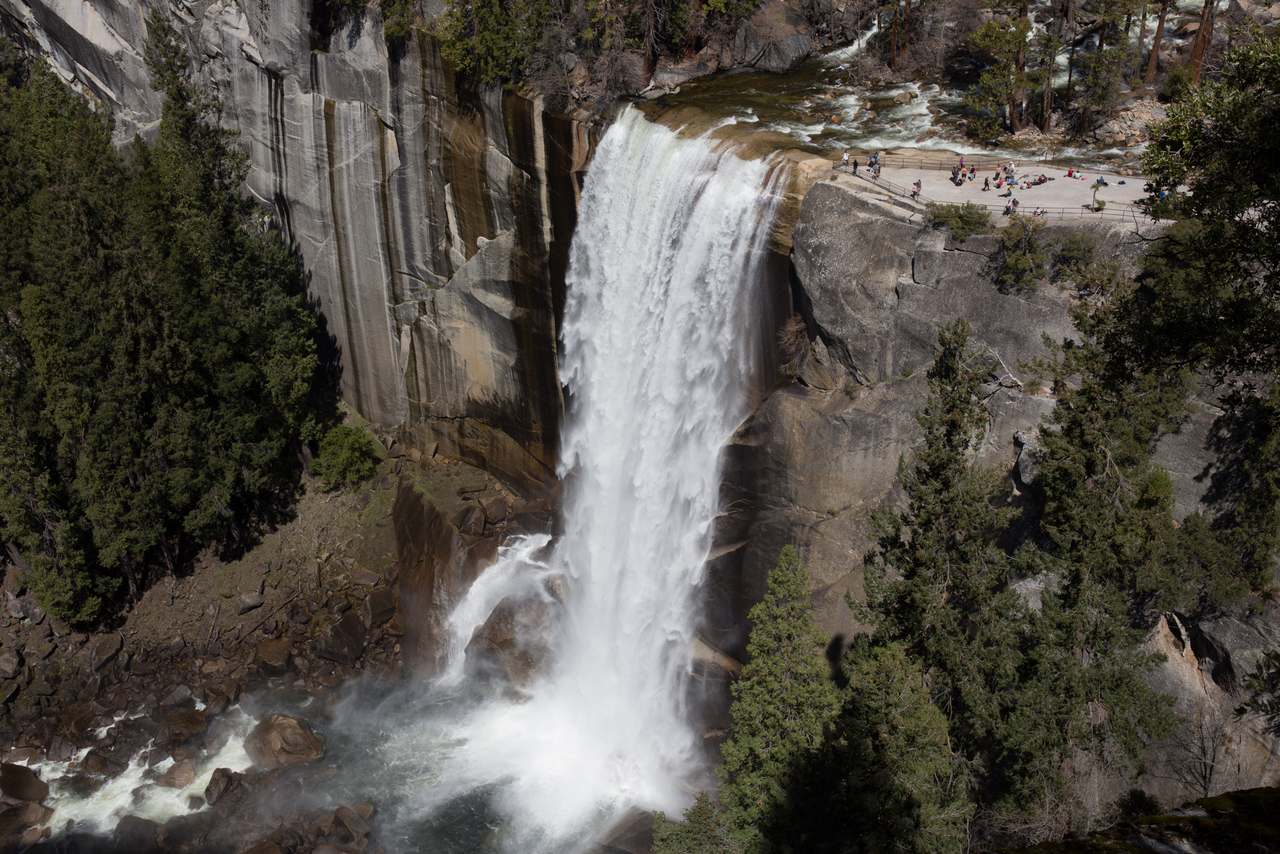
Vernal Fall in April (c) Lucy Woods
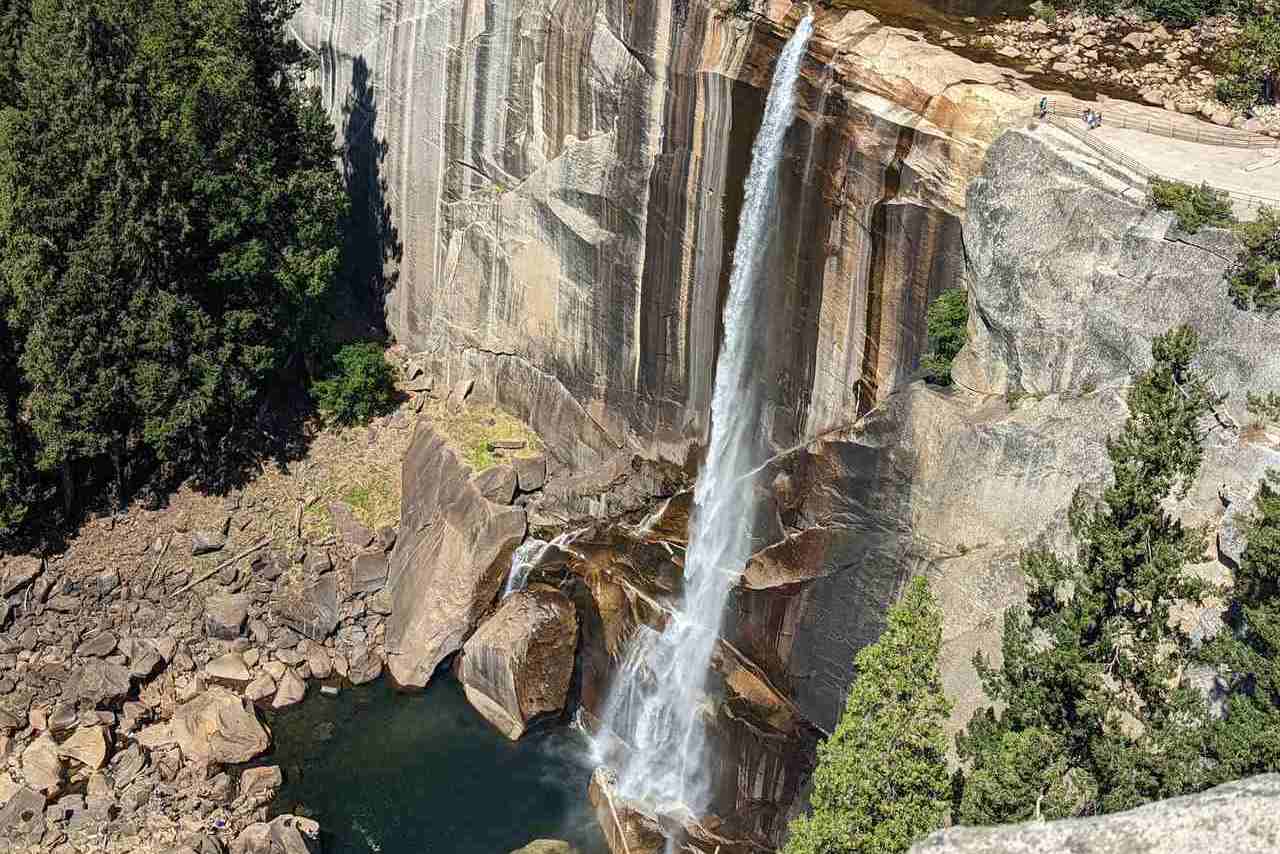
Vernal Fall in September (c) Lucy Woods
If you take the El Portal Road into the Park, you’ll drive along the Merced River spotted with huge boulders. Jagged granite cliffs loom into view and pine trees grow so tall you have to crick your neck to see the tops.
You’ll be given a map when you enter the park, and I recommend also downloading Yosemite National Park on Google Maps before you travel as mobile reception is spotty at best. Also check in advance to ensure the trails are open, as some of them are seasonal.
There are hundreds of trails to choose from, so where to start? Here are some of the iconic trails at Yosemite, all of which I have attempted.
Mist Trail with Nevada Fall Extension
Distance: 8.8 miles (loop)
Elevation gain: 1,900 ft
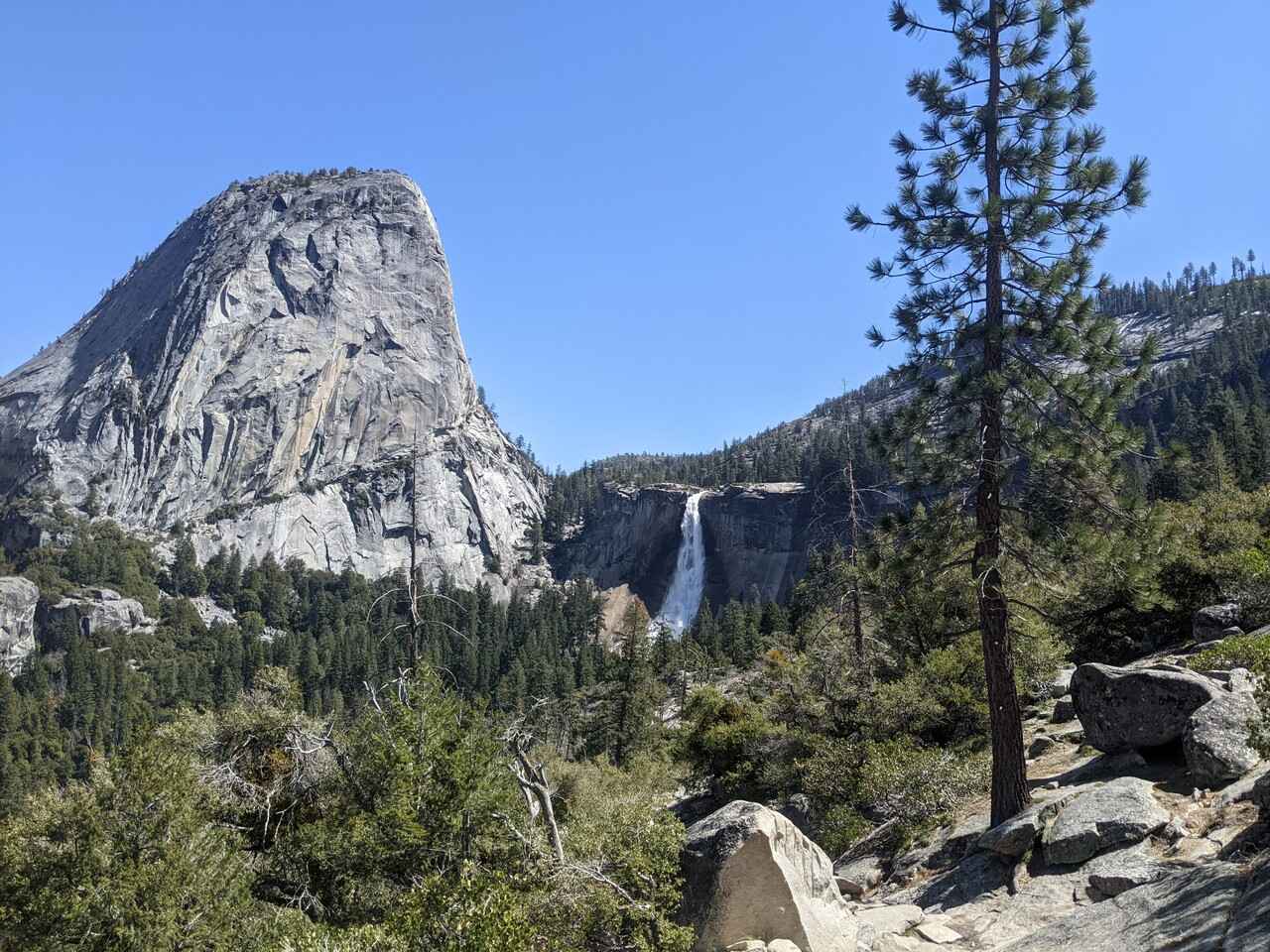
The looming presence of Sentinel Rock (c) Lucy Woods
This is one of Yosemite’s most popular trails and that’s because you’ll get up close and personal with the spray-tastic Vernal Fall – all 300 ft of it. The trail starts with a steep incline that takes you along a sturdy, wide path dotted with boulders and vegetation. You’ll reach a bridge that will take you over the river, and here’s your chance to use the facilities and top up your water bottle. You’ll then be presented with a fork in the path – my recommendation is to take the right fork called the John Muir Trail – it’s far less busy and is a steady gentle (ish) incline that sweeps across the mountain through multiple switchbacks.
At the top of John Muir Trail, you’ll be presented with views of Yosemite Falls and the looming presence of Sentinel Rock. At this point, you can either continue to Vernal Fall or take the extension that weaves its way up to the top of Nevada Fall. This is a good spot for lunch, although watch out for pesky squirrels hoping to steal a morsel.
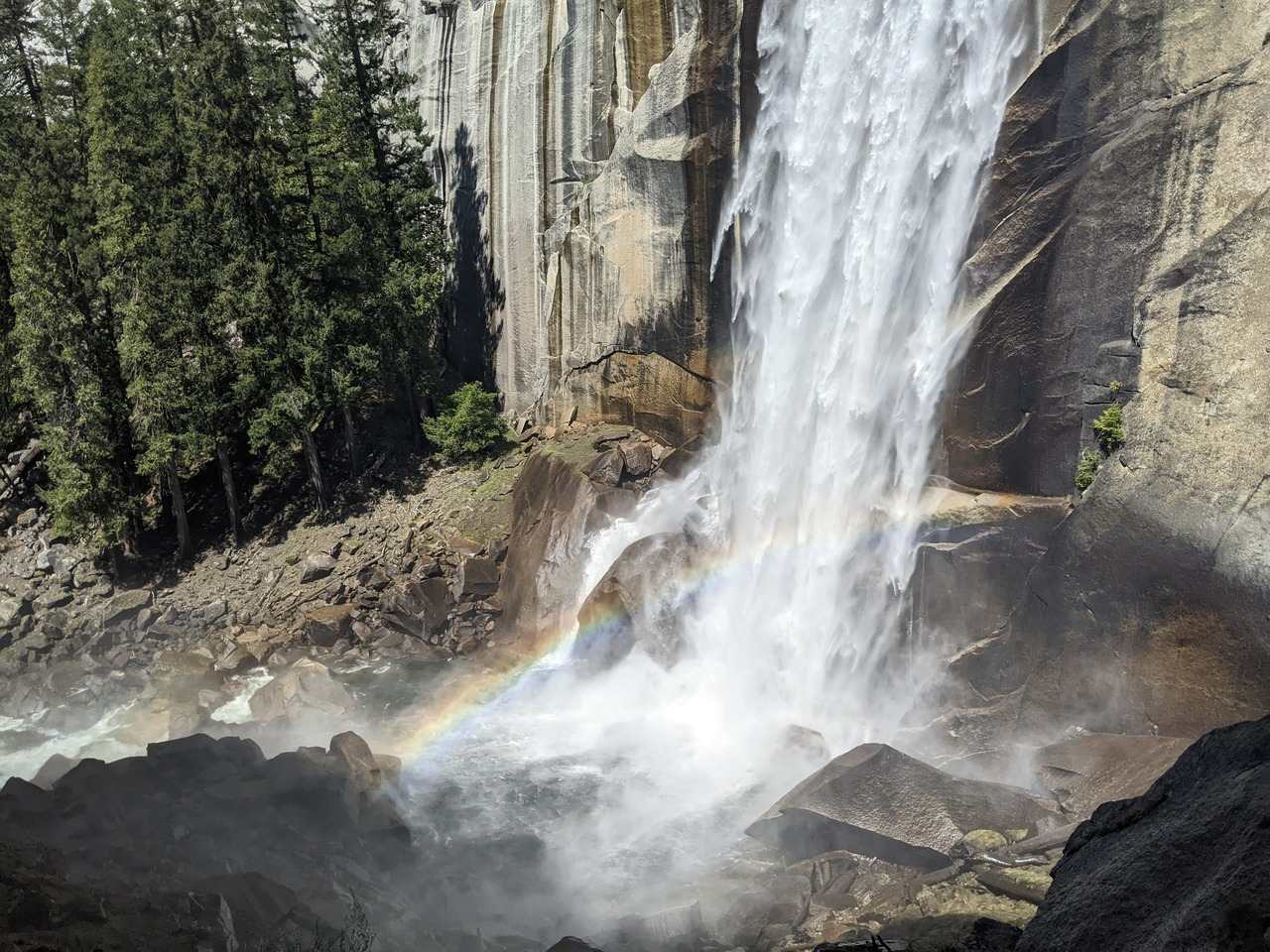
Vernal Fall rainbow (c) Lucy Woods
The highlight of this hike is when you reach the thunderous waters of Vernal Fall. It’s a bit of a fiddly climb down a steep set of stairs to the waterfall’s basin, but thanks to the spray you will be rewarded with a literal rainbow.
Upper Yosemite Fall
Distance: 7.2 miles (there and back)
Elevation gain: 2,700 ft
This hike is one of the most challenging I have attempted, as the elevation is fairly steep and some parts of the trail are quite rocky and require a bit of a scramble. You must bring plenty of water (at least two litres per person) as there is nowhere to fill up your water bottle except in the stream. It starts fairly easily with a path that winds its way back and forth through dozens of switchbacks until you reach Columbia Rock, with some lovely views including of Half Dome, a huge granite slab that rises nearly 5,000 ft above Yosemite Valley.
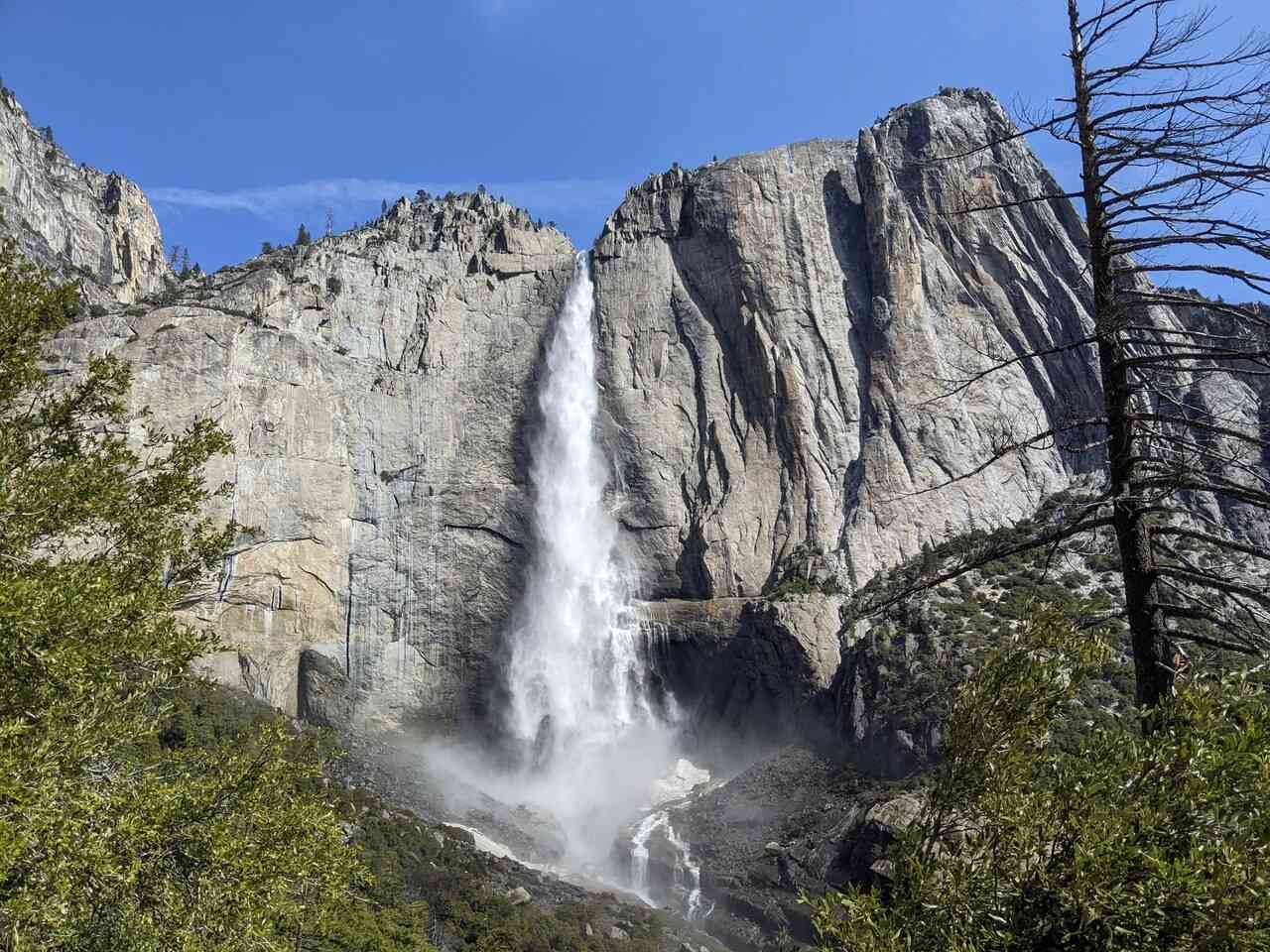
The incredible Yosemite Falls (c) Lucy Woods
Then the real work begins as you are taken to the west of Yosemite Falls, another thunderous waterfall with a 320 ft drop. The rocky trail zig zags uphill for several hours and it is fairly strenuous. That being said, about halfway up we once came across a hiker sitting on a camp chair cheerfully drinking a bottle of whiskey. Your hard work is rewarded as you reach the “overlook” which takes you to a viewing platform on the edge of the waterfall where you can gaze across the park. The journey back is almost entirely downhill (a challenge in its own way) that would be greatly aided by trekking poles.
Four Mile Trail
Distance: 9.6 miles (there and back)
Elevation gain: 3,200 ft
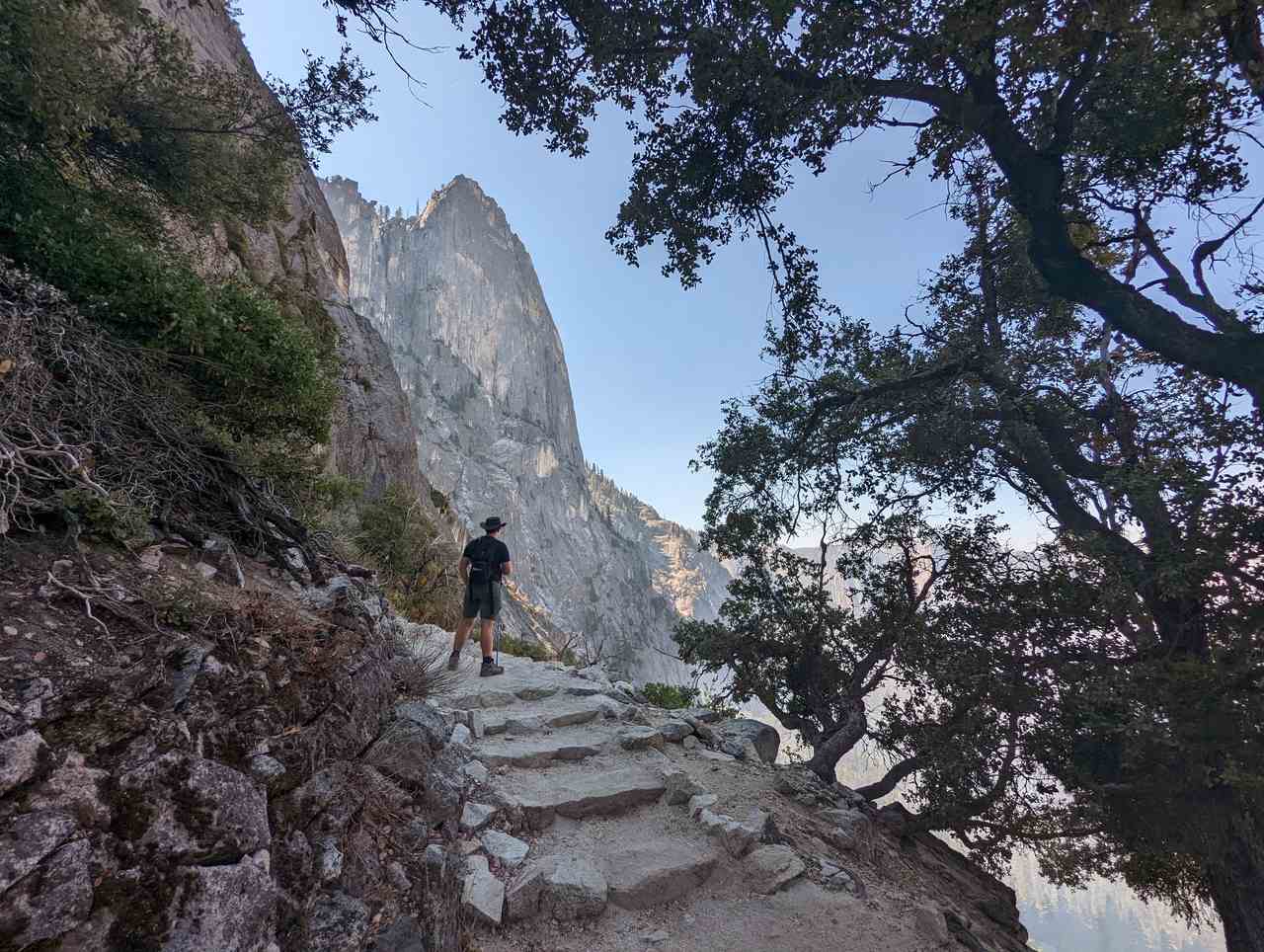
Turning a corner on the Four Mile trail (c) Lucy Woods
Though it doesn’t have the most exciting name, the Four Mile Trail is notable for being an incredibly enjoyable trail with lots of variety and fantastic viewpoints. It begins at the valley floor and takes you to Glacier Point. It also has the benefit of having a road at the top, so you can get a bus back to the bottom if you only want to go one way (check in advance to make sure the road is open, as it was closed throughout 2022).
The first part of the hike is gentle and covered with wildflowers if you visit at the right time of year (they are at their most blooming in May and June). Around almost every corner you’ll be presented with another great view, from Yosemite Falls to Cathedral Rocks, considered one of the most beautiful rock formations in the park due to their unusually symmetrical appearance. You’ll also be able to see El Capitan, whose vertical rockface is a popular draw for hardcore climbers.
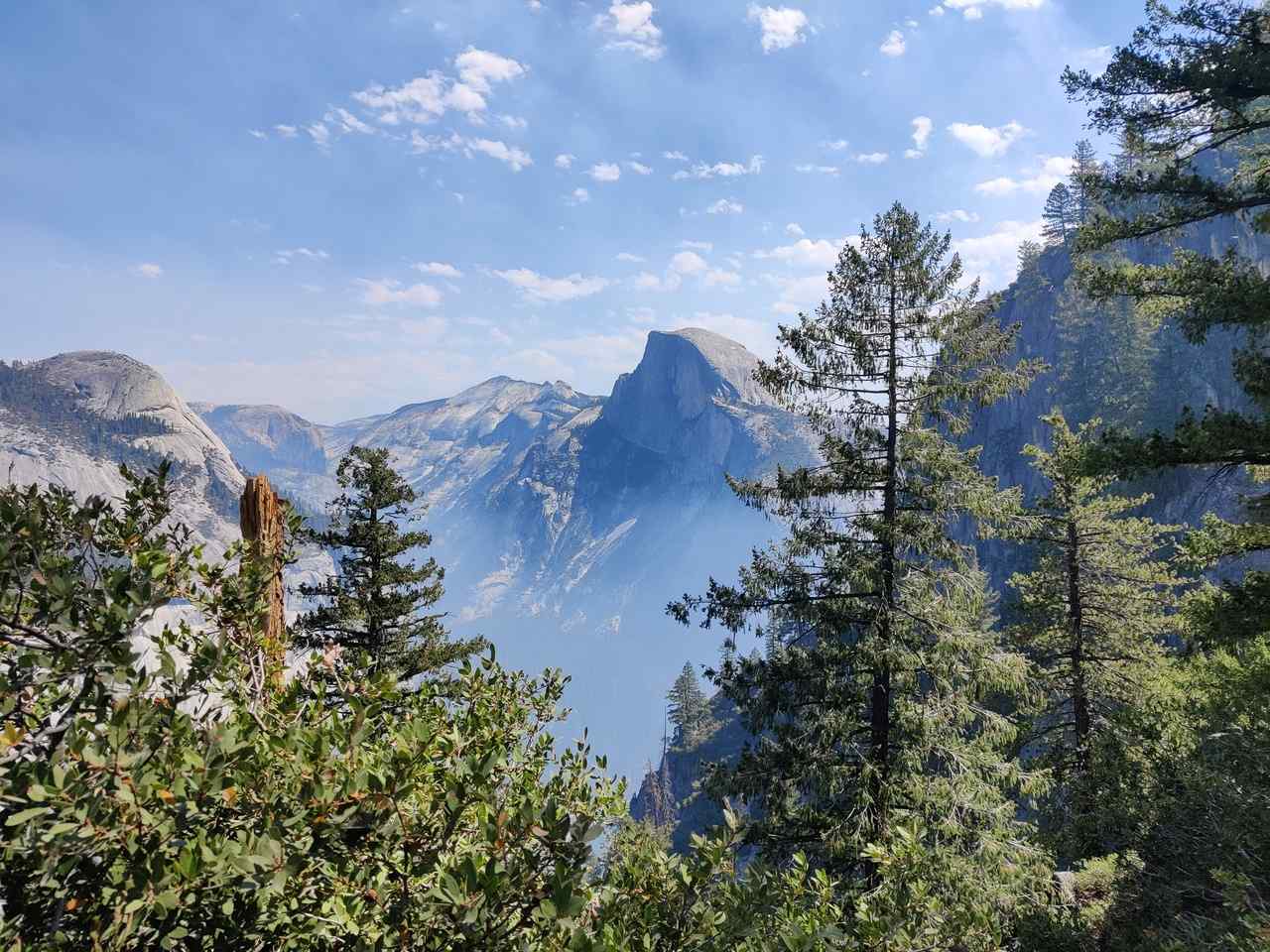
Four Mile Trail in summer (c)
When I attempted this hike, it was in September in 40°C (104°F) heat so we only managed 6 miles in total. It was a fantastic hike and we hope to complete it next time we visit the park.
Merced Grove of Giant Sequoias
Distance: 3 miles (there and back)
Elevation gain: 520 ft
This is the ideal trail to finish off your trip if your legs are feeling a bit sore from days of steep hikes.
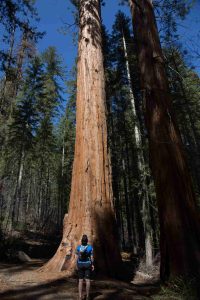
A magnificent giant sequoia at Merced Grove
Yosemite has three sequoia groves (Mariposa, Merced and Tuolumne), and I encourage you to visit at least one on your trip. These beautiful trees, the Giant sequoias, are the sole living species of their genus. They can reach up to 300 ft tall with diameters up to 26 ft – that’s more than four tall people stuck together.
Merced Grove is probably the least visited of the three and you’ll need to drive there. A wide footpath takes you through the sunlight-dappled forest down a steep path for just over a mile before you reach the first giant sequoias.
The park has made efforts to protect the trees, whose roots are sensitive, so there are barriers around the trees themselves. You’ll spend much of this hike looking straight upwards in awe at the height and beauty of these trees, whose bark is a distinct cinnamon-red.
The walk back is mostly uphill, but it’s not particularly challenging terrain. Merced Grove isn’t always open to visitors, so check in advance. Tuolumne is a great alternative but can get a bit busier.
Where to stay
I have visited Yosemite twice this year, and both times stayed at Yosemite Bug Rustic Mountain Resort located in Midpines, about an hour’s drive from the park itself. Accommodation at the resort is very reasonably priced, starting from just $18 + tax for a dormitory bed.
The resort also has a cafe that serves alcohol, and a spa (only $15 to use and has a huge metal hot tub). I would highly recommend booking a private cabin, which is incredibly roomy, quirkily decorated with lots of antique furnishings, and surprisingly luxurious.
[the_ad_placement id=”manual-placement”]